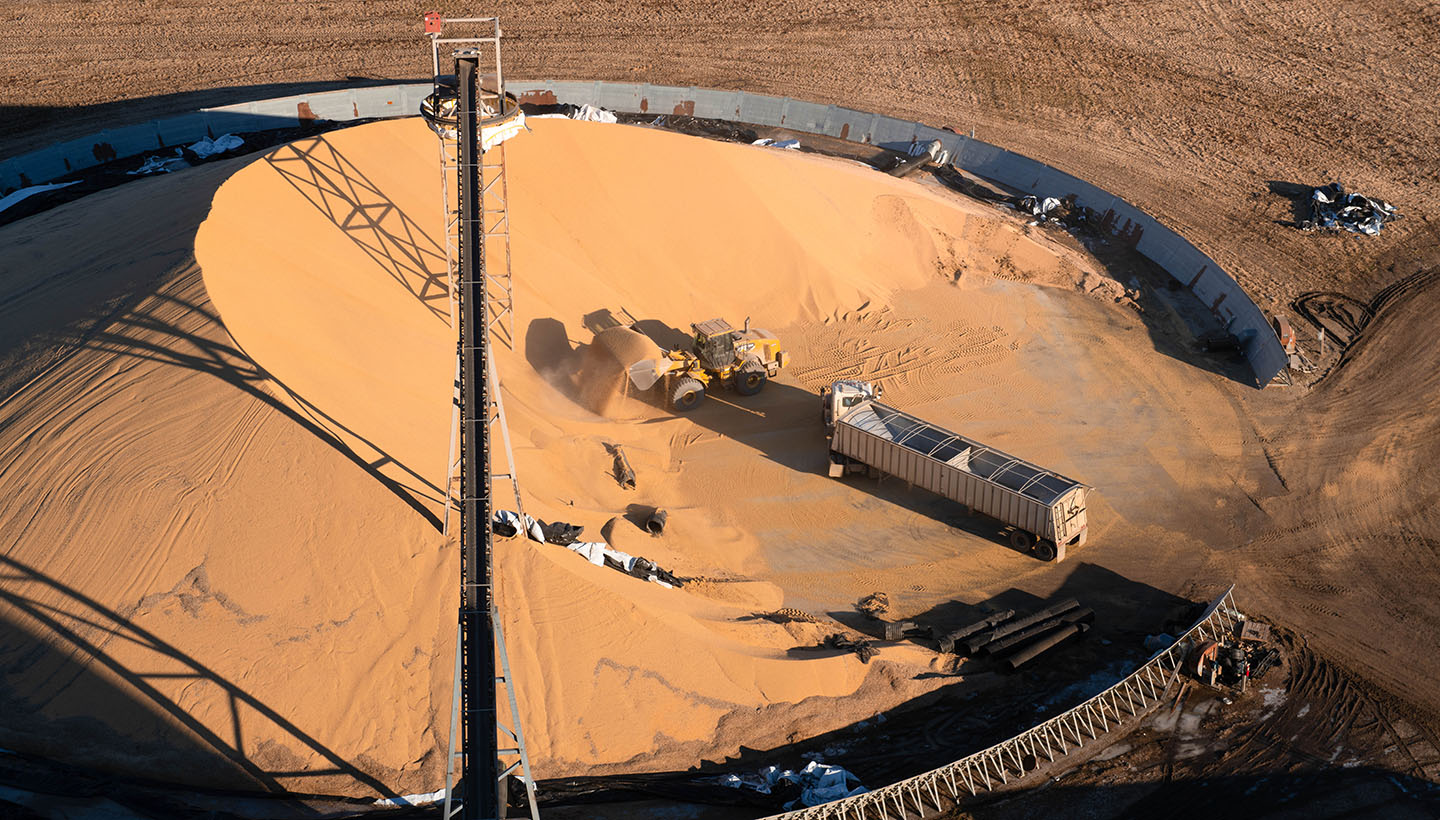
(Photo: Iowa Soybean Association)
Behind the numbers
July 8, 2022
Although the latest grain stocks report from the U.S. Department of Agriculture (USDA) slashed soybean acres by 2.7 million acres, stock numbers are up 26% and the expectations remain for a record U.S. soy crop, weather permitting.
Soybean acres in the June 30 report were cut 2.7 million acres back to 88.3 million acres, still the largest soybean area planted since 2018, according to USDA’s National Agricultural Statistics Service (NASS).
Soybeans stored in all positions on June 1, 2022, totaled 971 million bushels (mb), up 26% from one year prior. On-farm stocks totaled 331 mb, up 51% from a year ago, NASS reported. Off-farm stocks, at 640 mb, are up 17% from a year ago. Indicated disappearance for the March-May 2022 quarter totaled 960 mb, up 21% from the same period a year earlier.
“This would be the largest pace of demand during that quarter on record,” says Mac Marshall, vice president of Market Intelligence for the U.S. Soybean Export Council (USSEC) and the United Soybean Board (USB).
“With December-February disappearance clocking in at more than 1.2 billion bushels, total demand for U.S. soy during the past six months has been quite robust as crush remains strong and we see counter-seasonal strength in exports.”
ISA perspective
Here in Iowa, soybeans in all positions totaled nearly 207.5 mb, an increase of 71 mb, compared to the previous year. The figure includes stock at elevators, warehouses, terminals and processors.
Grant Kimberley, senior director of market development for the Iowa Soybean Association (ISA), says the USDA numbers are a mixed bag at this point.
“It’s close to somewhat expected,” he says. “Acres were slashed a bit, but the demand side saw some tweaks, too. I thought it was a mixed report. In the end, what will matter the most, is the final report at the end of year.”
And as always, weather, Kimberley says, will help shape those year-end numbers.
But it’s not weather alone. Inflationary concerns, continued unrest in Ukraine, supply chain issues, Brazilian and South American markets, as well as fertilizer costs and availability, will also be factors.
“There’s also the COVID shutdowns in China. There could be a longtail to that,” Kimberley says. “What kind of economic impact will that have on China longer term?”
In the immediate outlook, he says a concern is that in the previous few weeks, “we’ve seen a major drop in prices. Is this a correction? Or has the market truly rolled over, which would be a big problem for farmers going into next year.”
Soybeans were listed at $17.69 per bushel on June 9. At the close of business July 7, the price was $15.91 per bushel.
Kimberley says Iowa farmers, as well as the ISA, will continue to monitor costs, with concerns about everything from fertilizer and fuel, seed, machinery, land and interest rates.
“We need to stay focused on research, market development, communication and policy work,” he says. “We’re always trying to work together as an agricultural community … in the short-, medium- and long-term.
Shared responsibility
USSEC CEO Jim Sutter says as global supplies of soy are tight, the world is watching U.S. production.
“Now is the time to look carefully and critically at the global environment, what your customers expect and what you expect,” he says.
“Russia’s war on Ukraine, the aftermath of COVID, spiking inflation and supply chain disruptions all remind us of our shared responsibility to work together. U.S. soy farmers are maximizing production of nutritious, sustainable U.S. soy so that our customers and their customers’ families around the world can reliably and readily access nutritious, safe and affordable food every day.”
Back